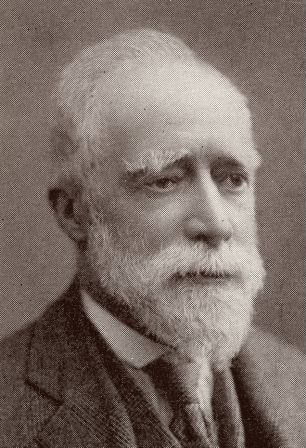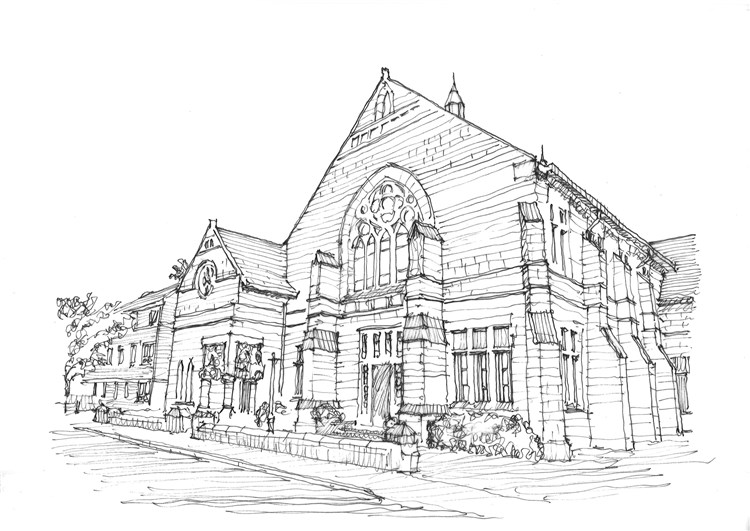
28th January 2019
Update from Cath Storey (Project Manager Fundraising & Communications) about Vineyard House Phase II – we’ve got the keys celebration, it’s a George Corson building, and we have an abundant history to connect with as we forge ahead into the new year!
On Monday 10th December last year we marked a very special time in the life of Leeds Vineyard with an evening of thanks, celebration and prayer. Thank you to all who attended, the Facebook post said it all; “We’re thanking God for bringing us to this point, and we’re looking forward with expectancy and excitement for all He will unlock in us and in our community.”

The last time the building had people from the community dedicating and praying over it was during the Laying of the Corner Stone proceedings by the then Major of Leeds back in July 1883, one hundred and thirty-six years ago, during Queen Victoria’s reign. According to the Order of Proceedings for the stone laying, there were prayers, an address by the Mayor, a vote of thanks and a Hymn – I wonder which one?
More recently, the project team and staff have been getting rather excited as we uncover Vineyard House’s rich heritage as well as firming up what we feel God is telling us to do with the building. Stephen Dixon from Calls Architecture has been appointed as our architect. Stephen is the Principal Director and is registered as a Conservation Architect. Sam Lewis, my project other-half, is enjoying working with him and together they are well on the way with building requirement documents and drafts of layout options to present to the project team, trustees and leadership team, as well as spending time delving into the archives.
History of the building and its architect George Corson
 A previous building for the Parish meetings rooms had existed, but the site was sold in 1875 and demolished. A new building, known as The Parochial Institute was constructed by George Corson in 1884. George Corson, born in Dumfries in 1829, came to Leeds in 1849 and by 1860 had his own Architectural practice. He was responsible for some of the most impressive municipal buildings of the Victorian era in the city of Leeds – including the magnificent Grand Theatre and the Central Library building with its spectacular Tiled Hall. He won some of the most important recognisable public commissions in Leeds including Roundhay Park (1873), School Board offices (1876) and the Leeds Infirmary extension (1891) and became the first president of the Leeds Architectural Society which he founded in 1976. Corson lived in Headingley where he died in 1910 aged 81.
A previous building for the Parish meetings rooms had existed, but the site was sold in 1875 and demolished. A new building, known as The Parochial Institute was constructed by George Corson in 1884. George Corson, born in Dumfries in 1829, came to Leeds in 1849 and by 1860 had his own Architectural practice. He was responsible for some of the most impressive municipal buildings of the Victorian era in the city of Leeds – including the magnificent Grand Theatre and the Central Library building with its spectacular Tiled Hall. He won some of the most important recognisable public commissions in Leeds including Roundhay Park (1873), School Board offices (1876) and the Leeds Infirmary extension (1891) and became the first president of the Leeds Architectural Society which he founded in 1976. Corson lived in Headingley where he died in 1910 aged 81.
According to the West Yorkshire Archive Service, the “objects of the proposed Institute” were: -
-
To give opportunities in the evening for self-improvement and wholesome recreation to the young men of the Parish.
-
To supply Class Rooms, which may be used for various educational and other purposes connected with the work of the Parish, both on Sundays and Week-days.
-
To provide a Reading Room, with daily papers and periodicals, which may be open throughout the day for the use of all classes of Subscribers.
-
To meet a want which has long been felt in Headingley, in the shape of a large and convenient Room for Public Entertainments, and Meetings of all Political and Religious parties, at a moderate charge.
We also learnt that:
The site, and £550 resulting from the sale of the old Glebe School, have, with the consent of the Charity Commissioners, been applied to this purpose, and Subscriptions amounting to £600 have been received.
Further Subscriptions are much needed, and in order to raise the total sum required, it is proposed to hold a GRAND BAZAAR in the large room as soon as it is completed.
Many Ladies have already promised to take Stalls, and full particulars will be shortly announced.
After World War 2 (c. Sept 1946) the British Legion occupied part of the building, other rooms were used for various community activities and in 1984 it was sold and converted into offices.
Wow, not sure we would get to our fundraising target with a “bring and buy” sale! We will be updating the website with more interesting facts and stories from the building’s rich past as soon as we can – original architectural drawings with George Corson’s signature on are inspiring for history buffs and us alike to see, but there is a cost for public release. A huge thanks must go to our very own history student extraordinaire – Eva Rogers - who has helped gather information from the University Library collection for us to use on the website and for funding bids.
Project specific update
As mentioned in Church last Sunday, the project has made strong and meaningful connections locally with a few more meetings to arrange. We also have work to do in terms of being good neighbours and sharing our plans with those who live nearby. In terms of our work which will feed into funding bids, the following are all being worked on: Case for Support documents for each of the known project areas which detail aims, objectives, people, resources, growth, budget, marketing ideas, and how it sits in the market place, as well as gathering evidence to support the need for projects; a Statement of Significance (Heritage) for the building together with business plans for year one and beyond once the capital revenue (money for the building’s renovation) has been spent.
also have work to do in terms of being good neighbours and sharing our plans with those who live nearby. In terms of our work which will feed into funding bids, the following are all being worked on: Case for Support documents for each of the known project areas which detail aims, objectives, people, resources, growth, budget, marketing ideas, and how it sits in the market place, as well as gathering evidence to support the need for projects; a Statement of Significance (Heritage) for the building together with business plans for year one and beyond once the capital revenue (money for the building’s renovation) has been spent.
Vineyard House is shaping up around the following named spaces;
-
The Workspace – the business component taking up about 1/3rd of the ground floor;
-
The Living Room – the communal space, multi-functional/pop-up style, taking up most of the ground floor (this is where the Child Contact Centre may be based;
-
The Venue – hosting events and large groups, children & youth work, community events and taking up most of the top floor;
-
The Sanctuary – specially equipped classrooms and safe place with laundry, showers, clinic etc. this will take up about a quarter of the top floor.
Not too dissimilar to the building’s past, new life will be breathed into it enabling the building to stand proud as an iconic space for the community once more. I think George Corson and those connected with the building’s past would be pleased.
If you would like to champion a specific project, do get in touch and if you would like to contact Sam or me about anything relating to the Vineyard House Project Phase II, please do email us via the office.
Cath Storey